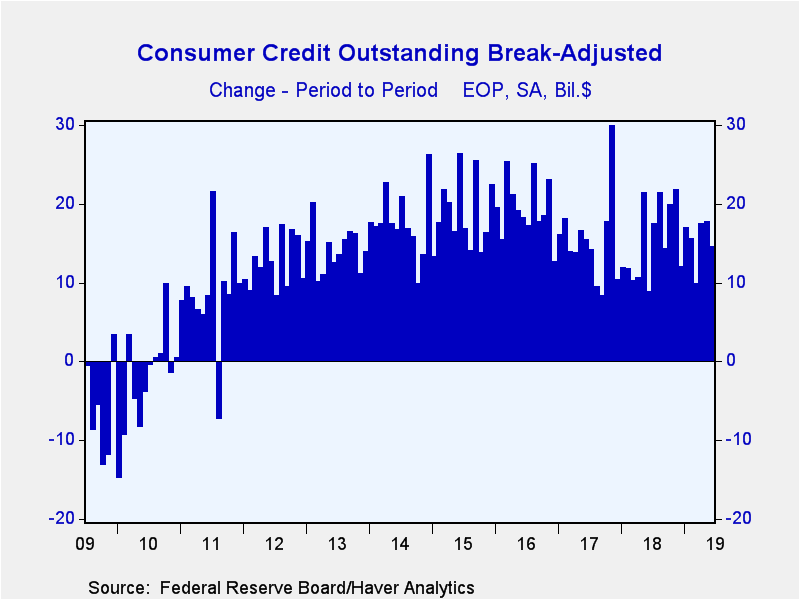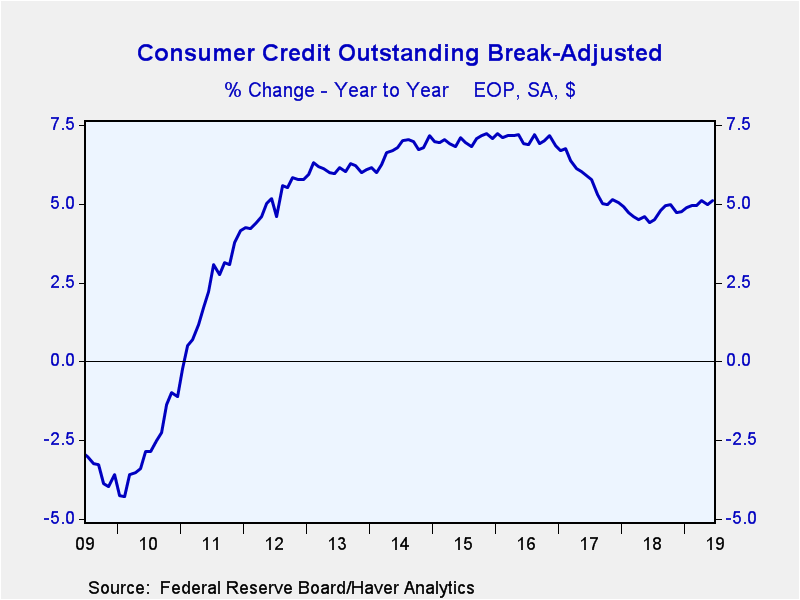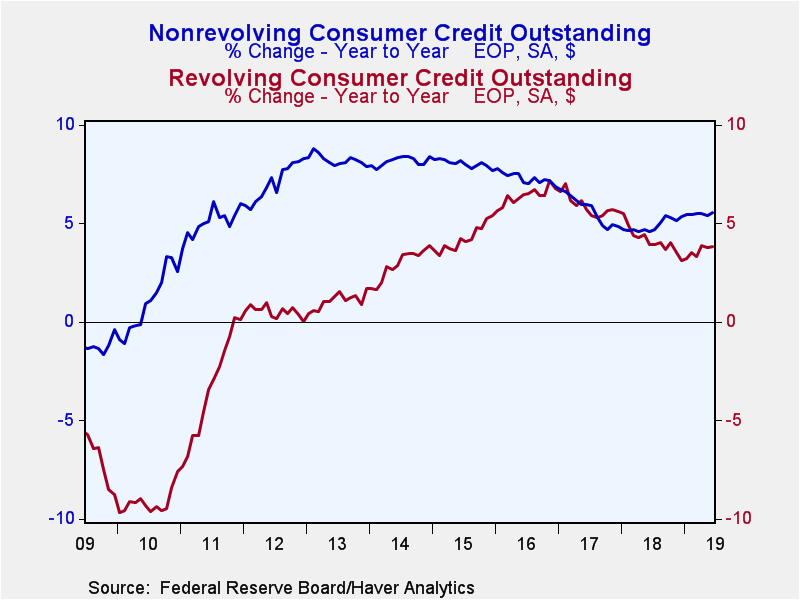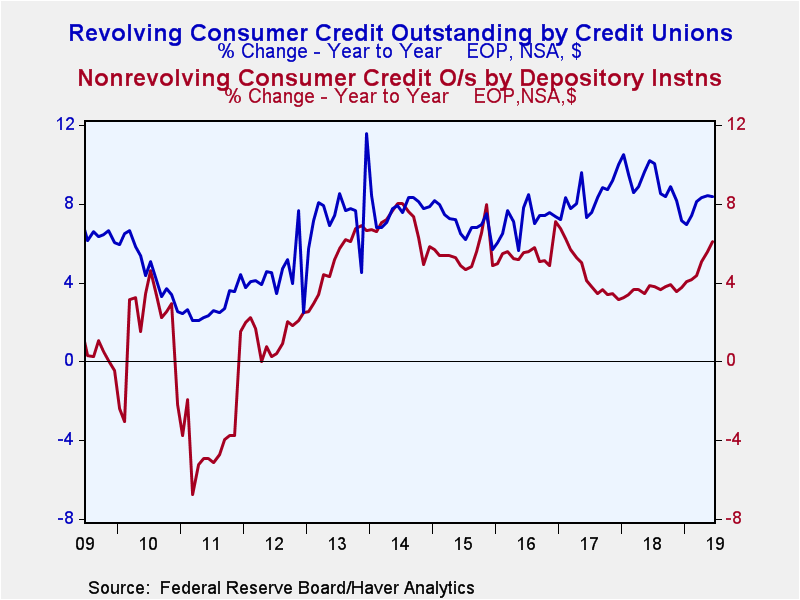 Global| Aug 07 2019
Global| Aug 07 2019U.S. Consumer Credit Usage Eases
by:Tom Moeller
|in:Economy in Brief
Summary
Individuals pared back their borrowing needs in June, but it remains strong. Consumer credit outstanding increased $14.58 billion (5.1% y/y) after rising $17.81 billion in May, revised from $17.10 billion. It was the smallest increase [...]
Individuals pared back their borrowing needs in June, but it remains strong. Consumer credit outstanding increased $14.58 billion (5.1% y/y) after rising $17.81 billion in May, revised from $17.10 billion. It was the smallest increase in three months. A $16.5 billion gain had been expected by the Action Economics Forecast Survey.
Nonrevolving credit usage grew $14.68 billion (5.6% y/y) during June, the strongest increase in six months. Borrowing from the federal government, which issues over 40% of nonrevolving credit, rose 7.3% y/y. Depository institutions lending (25% of credit) gained an accelerated 6.1% y/y. Meanwhile, finance company balances edged 0.7% higher y/y and credit union loans strengthened 8.7% y/y. Each of these sectors provide roughly 15% of nonrevolving credit.
Revolving consumer credit balances eased $0.08 billion (+3.9% y/y) in June following two months of strong increase. Credit provided by depository institutions, which makes up 90% of revolving balances, grew 4.9% y/y. Borrowing from credit unions (6% of the issuance) increased 8.4% y/y.
These Federal Reserve Board figures are break-adjusted and calculated by Haver Analytics. The breaks in the series in 2005, 2010 and 2015 are the result of the incorporation of the Census and Survey of Finance Companies, as well as changes in the seasonal adjustment methodology.
The consumer credit data are available in Haver's USECON database. The Action Economics figures are contained in the AS1REPNA database.
| Consumer Credit Outstanding (M/M Chg, SA) | Jun | May | Apr | Jun y/y | 2018 | 2017 | 2016 |
|---|---|---|---|---|---|---|---|
| Total | $14.58 bil. | $17.81 bil. | $17.49 bil. | 5.1% | 4.7% | 5.0% | 6.8% |
| Nonrevolving | 14.68 | 10.32 | 10.81 | 5.6 | 5.3 | 4.8 | 6.9 |
| Revolving | -0.08 | 7.48 | 6.68 | 3.9 | 3.1 | 5.6 | 6.8 |
Tom Moeller
AuthorMore in Author Profile »Prior to joining Haver Analytics in 2000, Mr. Moeller worked as the Economist at Chancellor Capital Management from 1985 to 1999. There, he developed comprehensive economic forecasts and interpreted economic data for equity and fixed income portfolio managers. Also at Chancellor, Mr. Moeller worked as an equity analyst and was responsible for researching and rating companies in the economically sensitive automobile and housing industries for investment in Chancellor’s equity portfolio. Prior to joining Chancellor, Mr. Moeller was an Economist at Citibank from 1979 to 1984. He also analyzed pricing behavior in the metals industry for the Council on Wage and Price Stability in Washington, D.C. In 1999, Mr. Moeller received the award for most accurate forecast from the Forecasters' Club of New York. From 1990 to 1992 he was President of the New York Association for Business Economists. Mr. Moeller earned an M.B.A. in Finance from Fordham University, where he graduated in 1987. He holds a Bachelor of Arts in Economics from George Washington University.










